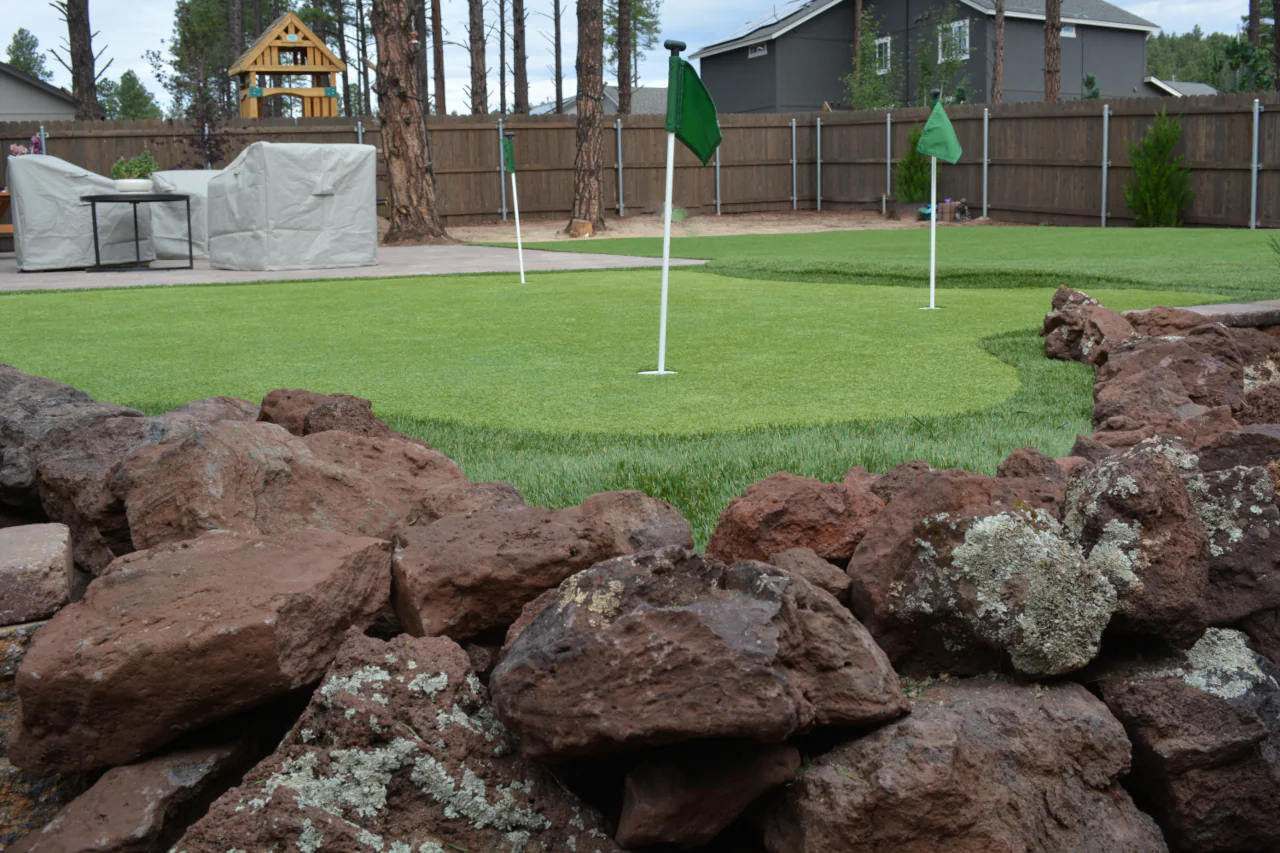How to Design a Three-Hole Practice Green

A three-hole practice green gives you a simple, enjoyable way to sharpen your short game without consuming all your outdoor space. This guide explains a smart layout, easy pin placement ideas, which types of turf work best for a backyard putting green setup, and bite-sized practice routines. Sprinkle in a little creativity and a regular practice schedule, and you’ll be developing smoother, more confident strokes in no time.
SIZE, SHAPE, AND HOW IT FITS THE YARD
Start by mapping a flat or gently sloped area that doesn’t interfere with driveways, flower beds, or heavy foot traffic. A typical three-hole green can fit in 300–700 sq. ft., depending on how much walking you want between holes. Think of three areas that create engaging angles: a short straight putt, a medium putt with gentle slope, and a longer, breaking putt.
If you opt for a full synthetic grass installation, pick a spot with strong sun and consider how the water will drain there. Proper base preparation keeps the surface consistent and helps the turf perform like a real putting surface. If you’re building in a smaller area, alternate hole positions so each one feels unique without needing much additional artificial grass.
LAYOUT TIPS FOR BETTER PRACTICE
Vary distances: aim for one short-range hole (6–10 ft.), one medium-distance putt (12–18 ft.), and one extended putt (20–35 ft.). That range requires different putting speeds and focus.
Use subtle contours: small elevations or gentle low spots add variety without requiring major earthwork.
Create approach area options: include a small chipping patch beside one hole so you can practice pitch-and-putt combinations.
Edge details: a low-profile roll-up edge or bunker accent adds style and gameplay challenges.
Throughout the layout process, note your installation goals — whether you want a full synthetic turf base or a hybrid renovation — because different turf products perform differently depending on prep work.
PIN PLACEMENT THAT KEEPS PRACTICE FRESH
Change pin locations regularly. Move pins to the front, middle, and back to create new read lines. A simple system: A-B-C rotation where A = forward, B = center, C = rear. For extra challenge, place a temporary pin on the outer edge of a slight slope to train reads and speed control.
Use removable cups or portable pin kits so you can adjust pin locations without damaging the turf. Changing pins on synthetic turf putting greens is easy and lets you recreate tournament diversity in a Jacksonville backyard setting.
SHORT PRACTICE ROUTINES FOR BUSY LIVES
No need for hour-long sessions. Try three compact drills that fit the three-hole layout:
Speed Ladder (6–12 minutes): Start at the short hole and putt three balls from each range—short, mid, long—focusing on a consistent stroke length for each distance.
Break Read Drill (8–12 minutes): From a fixed spot, putt to each of the three holes with the pin in a new position. Work on judging the break and modifying your stroke pace.
Pressure Finish (5–8 minutes): Make two-putt cycles around the three holes. If you complete the circuit successfully, reward yourself with a more difficult position next round.
Short routines like these keep progress steady and make practice habit-forming. Mix them throughout the week for well-rounded improvement.
